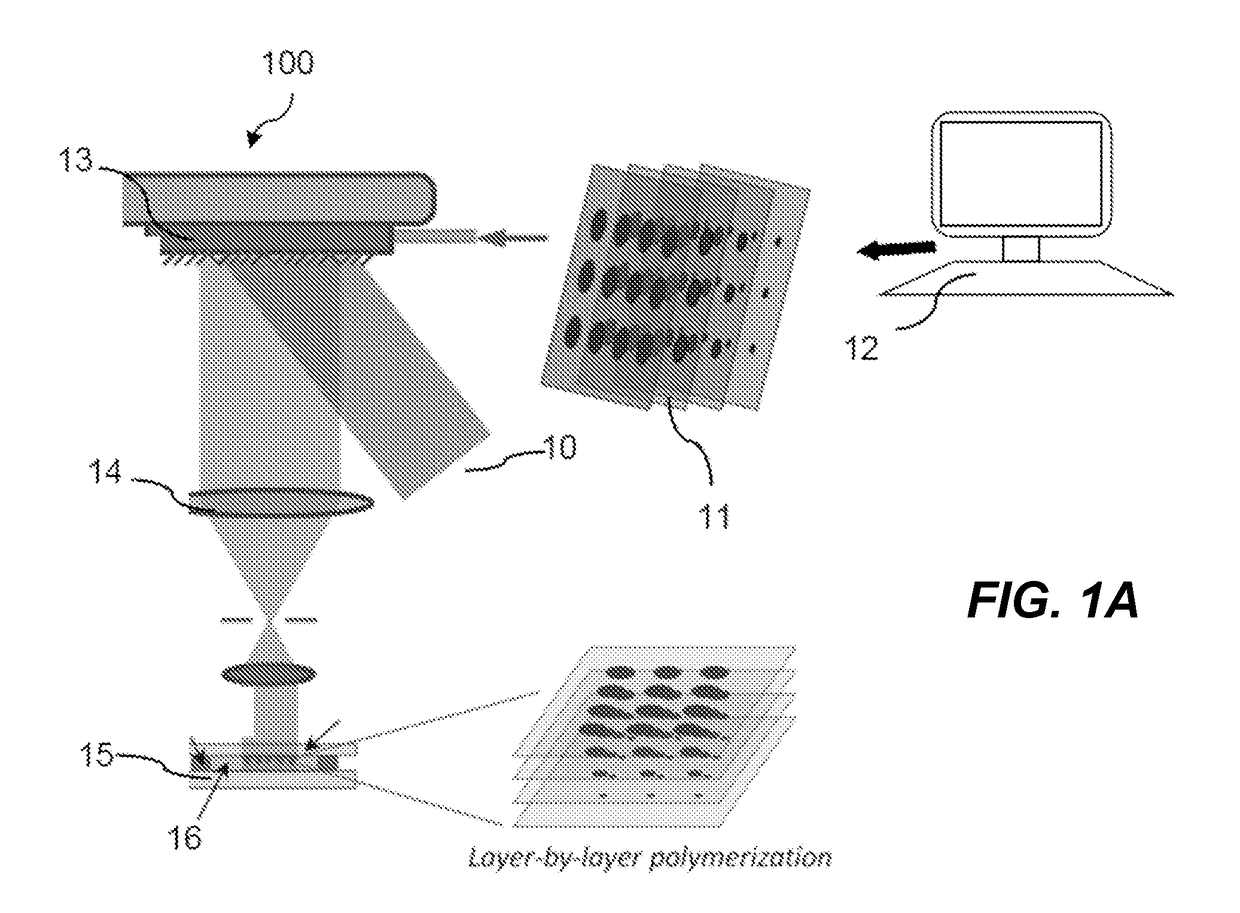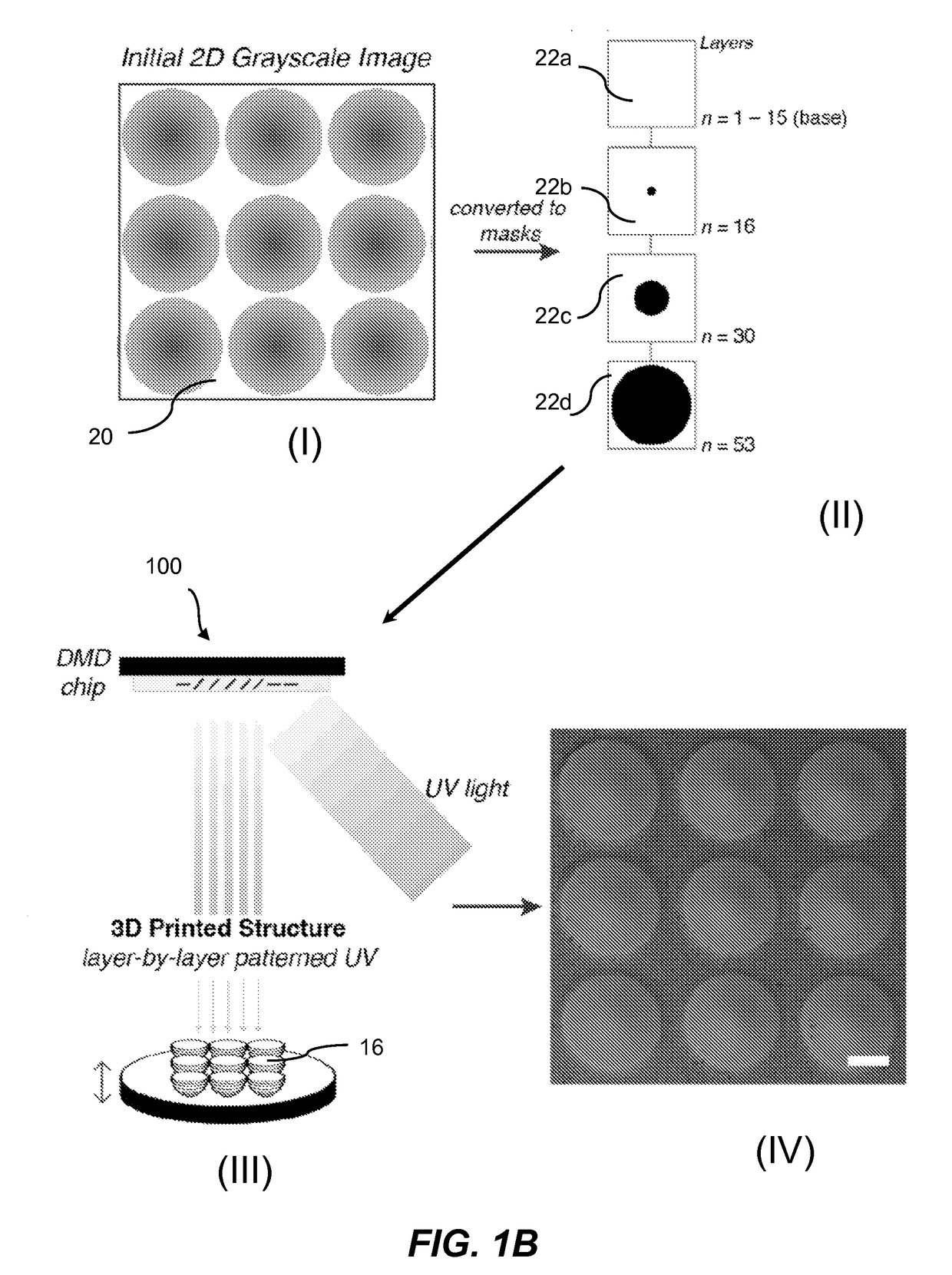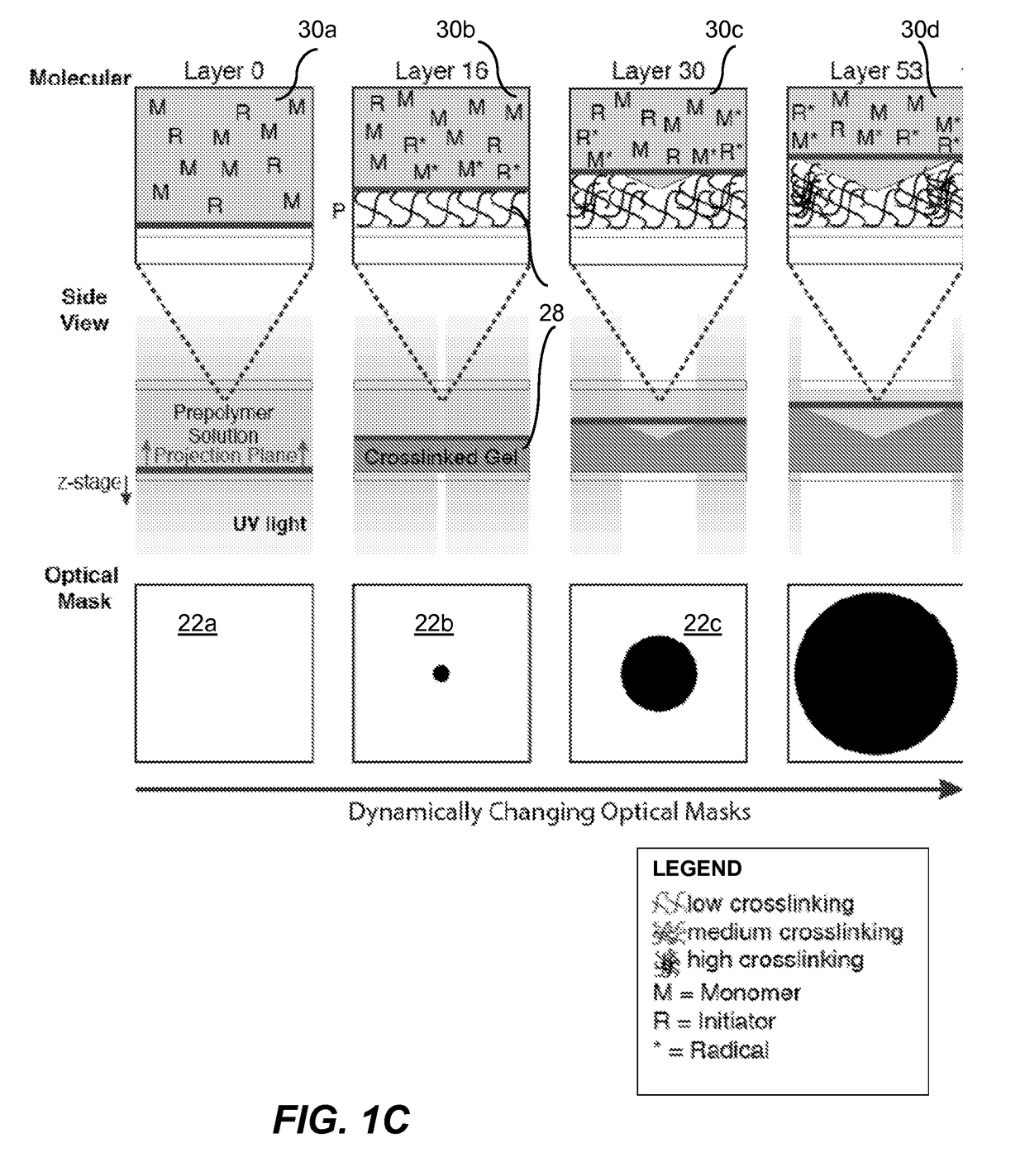Method for fabrication of microwells for controlled formation of 3-dimensional multicellular-shapes
a technology of multicellular structure and microwell, which is applied in the field of 3d printing platform and method of microwell, can solve the problems of limited optical transparency, lack of reproducibility, labor-intensive process, etc., and achieve the effects of enhancing tissue engineering and drug screening fields and clustering siz
- Summary
- Abstract
- Description
- Claims
- Application Information
AI Technical Summary
Benefits of technology
Problems solved by technology
Method used
Image
Examples
Embodiment Construction
[0042]The proposed 3D printing technology utilizes continuous 3D printing of a series of layers using an automated stage. While similar 3D printing systems have been previously disclosed (see, e.g., International Publication No. WO2014 / 197622, and International Publication No. WO2012 / 071477, which are incorporated herein by reference), the present invention provides an important modification that uses non-linear UV light exposure, i.e., non-linear projection optical printing (nPOP), to enable precise control of the polymerization for formation of optimal structures for cell culture.
[0043]According to the exemplary embodiments, a method for three-dimensional printing of a concave structure comprises providing a plurality of masks, each mask representing a cross-section of a layer of the concave structure. Progressively moving a projection plane exposes a pre-polymer solution to a polymerizing radiation source modulated by the plurality of masks to define the plurality of layers of th...
PUM
| Property | Measurement | Unit |
|---|---|---|
| exposure time | aaaaa | aaaaa |
| diameter | aaaaa | aaaaa |
| critical size | aaaaa | aaaaa |
Abstract
Description
Claims
Application Information
 Login to View More
Login to View More - R&D
- Intellectual Property
- Life Sciences
- Materials
- Tech Scout
- Unparalleled Data Quality
- Higher Quality Content
- 60% Fewer Hallucinations
Browse by: Latest US Patents, China's latest patents, Technical Efficacy Thesaurus, Application Domain, Technology Topic, Popular Technical Reports.
© 2025 PatSnap. All rights reserved.Legal|Privacy policy|Modern Slavery Act Transparency Statement|Sitemap|About US| Contact US: help@patsnap.com



